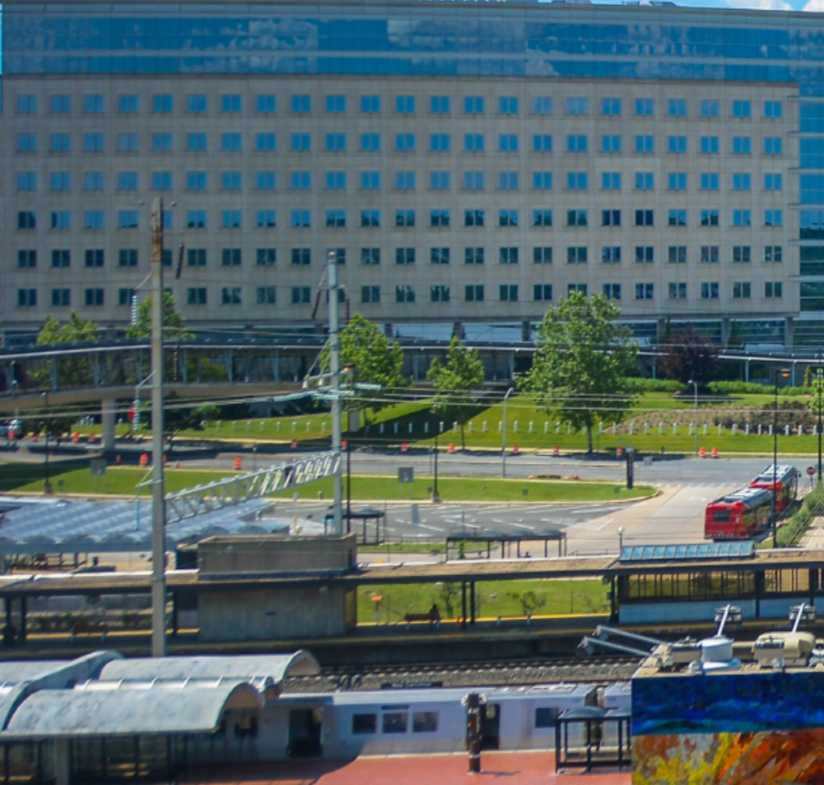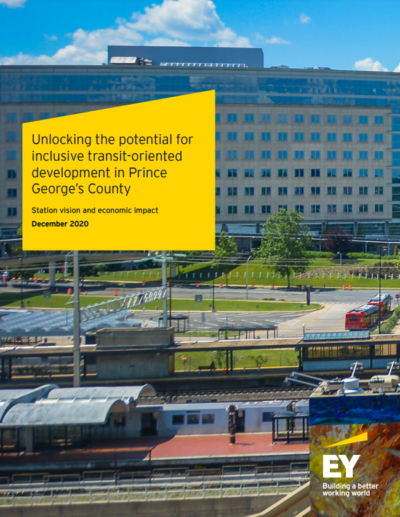Unlocking the potential for inclusive transit-oriented development in Prince George’s County
Publish Date: December 2020

 Download Report »
Download Report »
Transit-oriented development (TOD) integrates public transportation options and relatively dense, mixed-use development. This report examines TOD potential near rail stations in Prince George’s County, Maryland (Prince George’s or County) and identifies barriers to development. It also includes potential solutions and case study examples of TOD success achieved by other communities. Lastly, to further illustrate the potential benefits of additional TOD, this report presents hypothetical new developments and the potential economic impacts by highlighting four specific station areas in the County (New Carrollton, Greenbelt, Morgan Boulevard and Southern Avenue) that currently have strong potential for TOD and provides options for policy- and market-based efforts to encourage inclusive mixed-use development at those stations.
Today, lack of funding, absence of station-specific and coordinated visions and the physical conditions of the station areas present significant barriers to successful TOD implementation. The study presents potential actions to
overcome these barriers and increase TOD in Prince George’s. The findings are supported by over 40 interviews with local stakeholders; a qualitative evaluation of existing County strategies and applicable regulations, statutes and zoning codes; and a quantitative analysis of market conditions.
To increase funding, where possible the government stakeholders could consider bundling tax credits that encourage both development and job creation and
streamlining the permitting, fee waiver and approval processes. In addition, existing state and local incentive programs, such as the More Jobs for Marylanders (MJM) tax credit and tax increment financing (TIF), could be expanded to TOD-designated areas. This could provide broader applicability and flexible use of these programs. TOD could be enhanced further by layering federal-level incentives where possible and seeking public-private partnerships (PPP).
To establish a stronger and more coordinated vision, the County could work collaboratively with the state, local municipalities and private stakeholders for a mutual benefit to all parties, creating a defined sense of place and exciting environment for each station. To optimize strategic implementation, the County could consider forming an interagency team dedicated to addressing roadblocks, establishing TOD goals and metrics to track progress and creating small-area plans that generate public stakeholder buy-in.